A well-designed patio can serve as a relaxing retreat, an entertainment hub, or a seamless transition between your indoor and outdoor areas. This guide will walk you through the essential elements of building the base of a perfect patio, from choosing the right materials to incorporating design elements that enhance both functionality and aesthetics.
Patio Material Options
As you plan for your new patio, one of your first and most important decisions is selecting the material for your patio floor. The surface you choose dictates the style, cost, and maintenance needs of your outdoor space. The most popular options include brick, concrete, stone, and gravel, each offering unique benefits and aesthetic appeal.
Your choice of material will influence whether you can tackle the project yourself or hire a contractor. We’ll walk through the characteristics of each material option will help you make the best decision for your perfect outdoor space.
Concrete
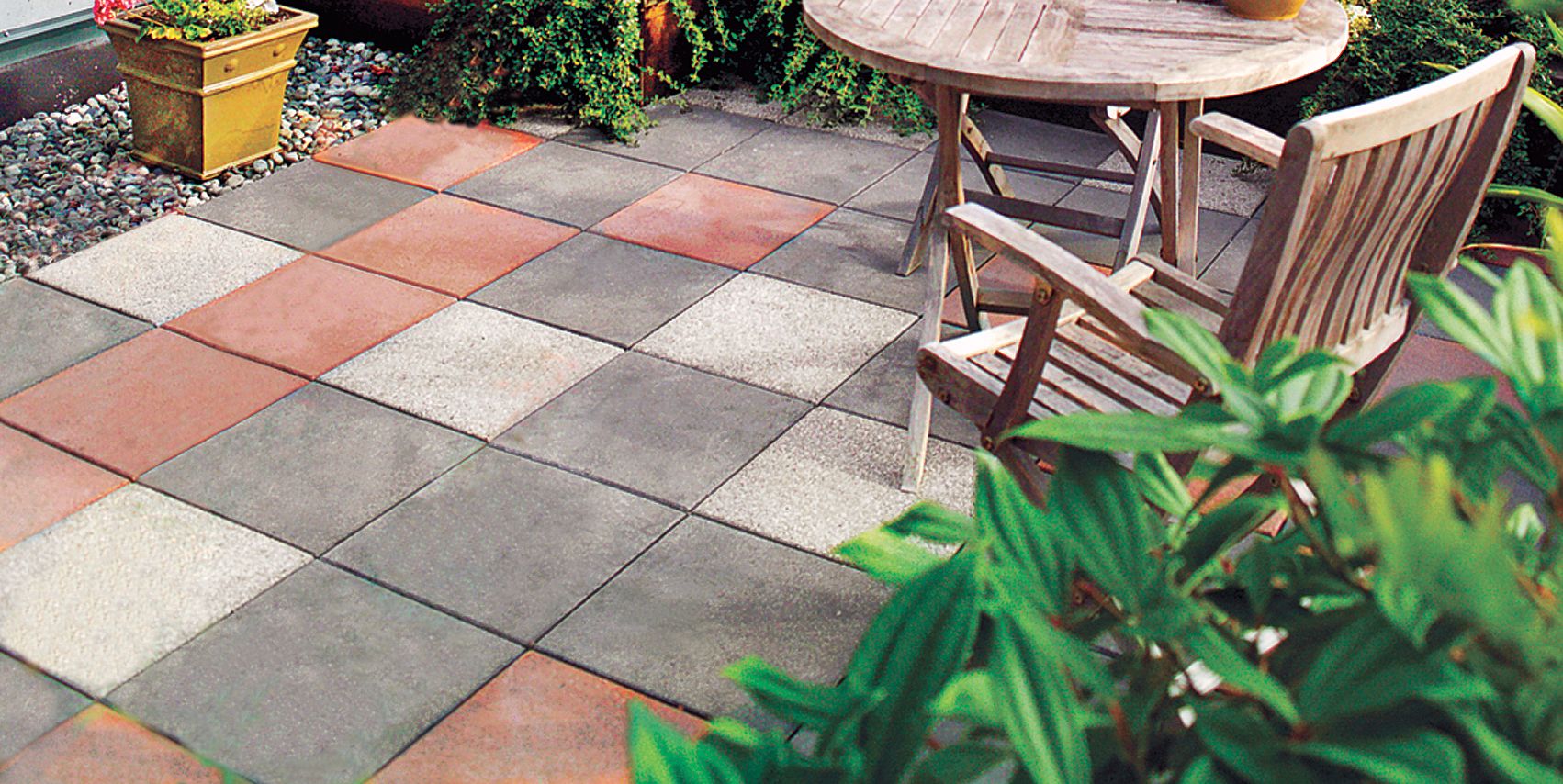
Concrete patios come in two main forms: poured concrete and precast modular slabs. Poured concrete offers a seamless look and can be customized with various finishes, colors, and textures.
Precast concrete slabs, on the other hand, are more DIY-friendly and can be installed without the need for specialized equipment. You can also use stamped and tinted concrete to mimic the appearance of more expensive materials like slate or stone, allowing you to achieve a high-end look at a fraction of the cost.
Textured Veneer
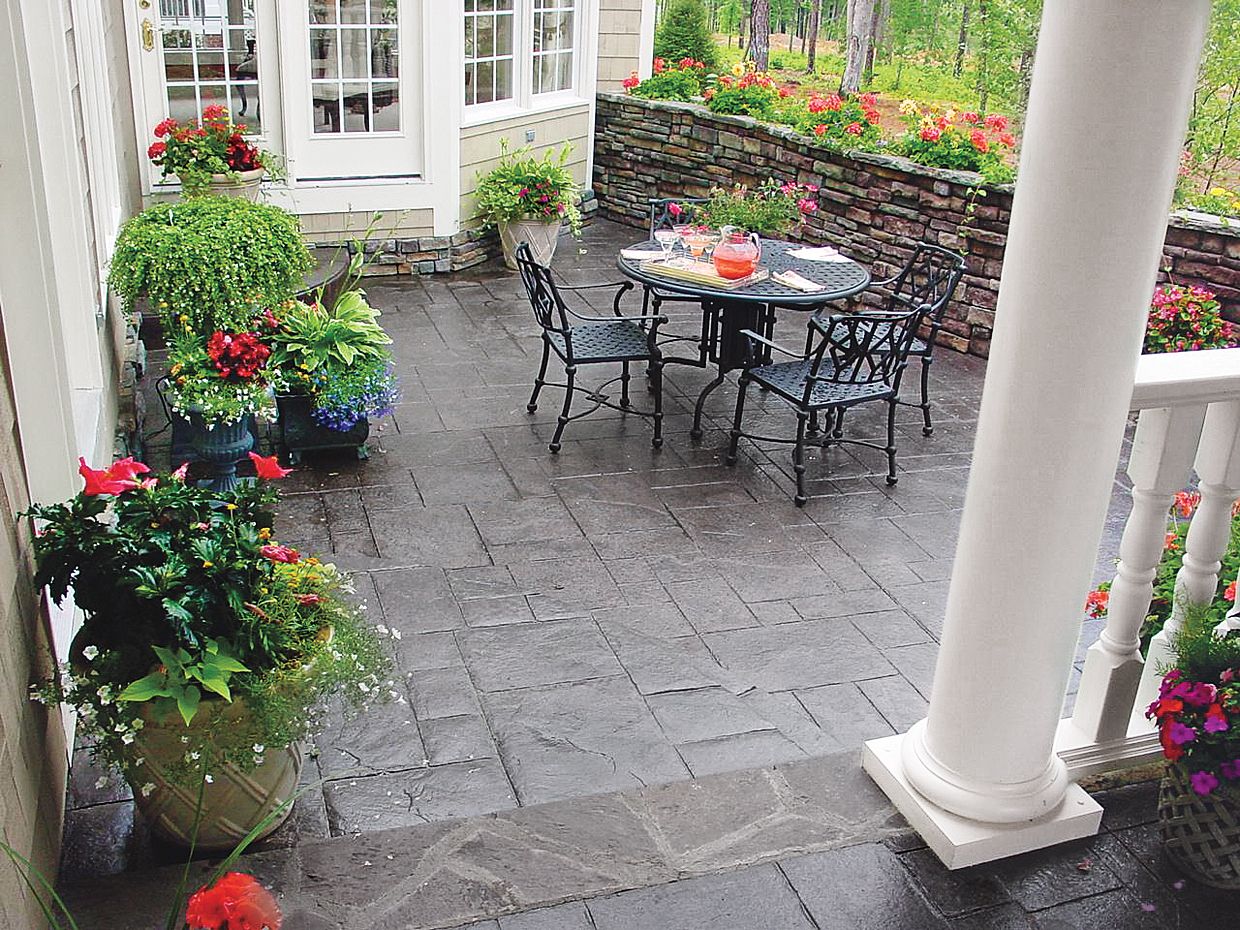
For those looking to refresh an existing concrete patio, a thin concrete overlay can provide a cost-effective facelift. These overlays can be stamped and colored to create a new look without the expense of replacing the entire patio. Durable and versatile, concrete veneers are a long-standing favorite among homeowners.
Gravel
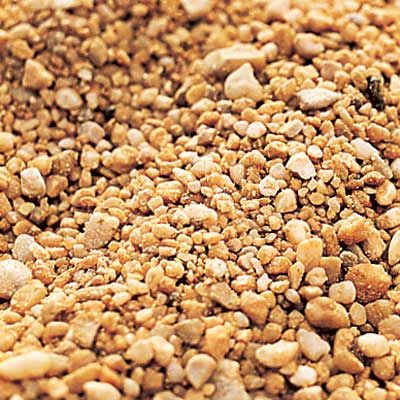
Gravel patios are an excellent choice for homeowners who want an affordable and easy-to-install option. This material is perfect for creating informal, natural-looking patios that can easily accommodate curves and irregular shapes. Gravel patios don’t need a lot of maintenance—just the occasional raking to keep the surface level and neat.
When you install a gravel patio, we recommend using landscape fabric between the packed base and the top layer of gravel. This prevents the materials from mixing and helps maintain the integrity of your patio. Gravel comes in a wide range of colors and sizes, so you can customize the look to complement your home and landscape.
Speckled Pea Gravel
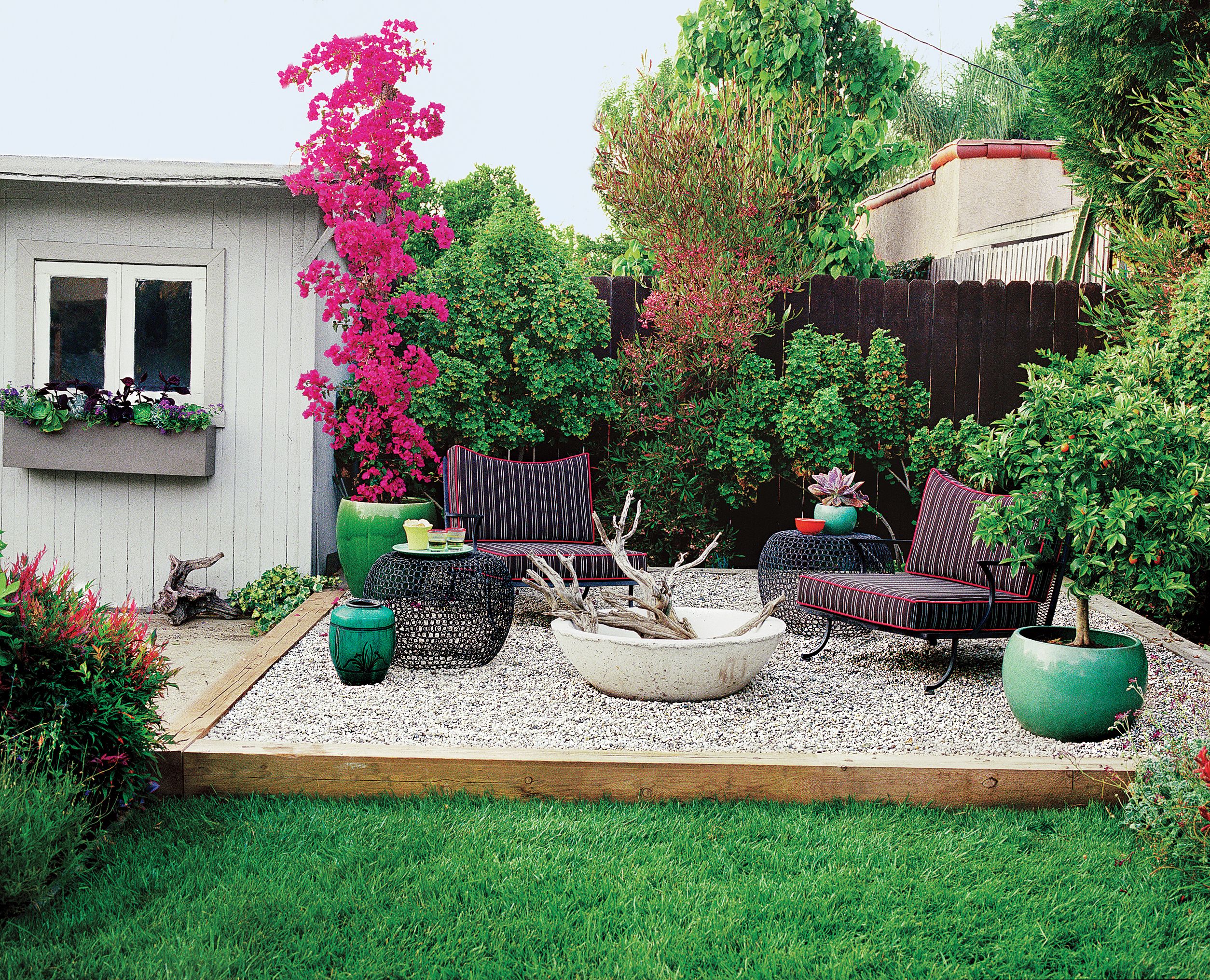
Pea gravel is a popular choice for creating a beachy, relaxed atmosphere in your outdoor space. Its small, rounded pebbles come in various natural shades, providing a visually interesting and textured surface. One of the significant advantages of a gravel patio is its excellent drainage properties—you’ll have little concern about water pooling after a hard rain.
When installing a gravel patio, you should think about edging options to keep the pebbles in place. Steel edging sunk into the soil or pressure-treated timber borders are common choices that help maintain the patio’s shape and prevent gravel from spreading into surrounding areas. The simplicity and charm of pea gravel make it an appealing option for many homeowners.
How It’s Done
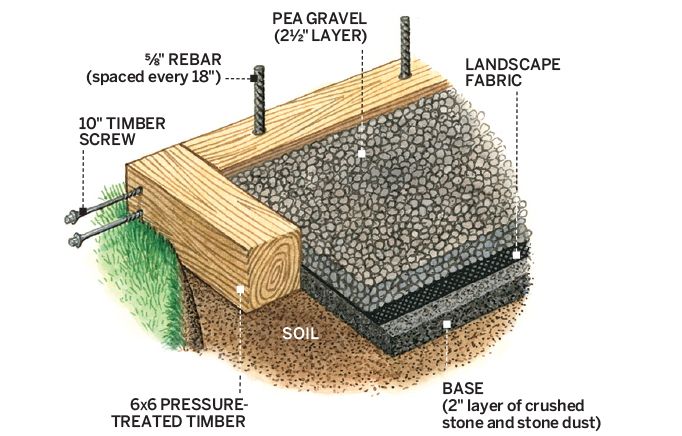
Creating a gravel patio using the “sandbox” method is an excellent DIY project. This approach needs minimal digging, making it less labor-intensive than other patio installations. Here’s a brief overview of the process:
- Remove the existing turf from the patio area.
- Create a frame using treated timber, securing it to the ground with steel rebar.
- Add a base layer of crushed stone and stone dust for stability.
- Install landscape fabric to prevent material mixing.
- Fill the frame with a top layer of pea gravel.
Bricks and Pavers
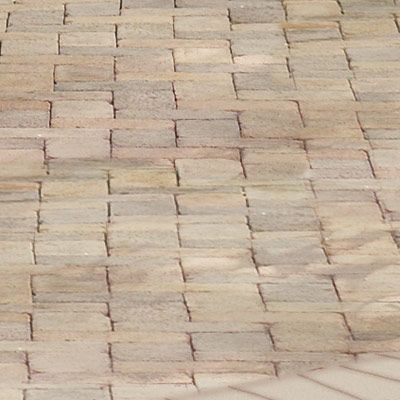
Brick and concrete pavers are popular choices for creating durable and attractive patios. Bricks typically come in shades of red, yellow, or gray, while concrete pavers offer a wider range of colors. Their small size makes them easy to handle and install, and they can be arranged in various patterns to suit different design preferences. A paver’s smooth surface is easy to sweep and keep clean.
Both materials create a stable surface that’s ideal for furniture placement and foot traffic, making them excellent choices for frequently used outdoor living spaces.
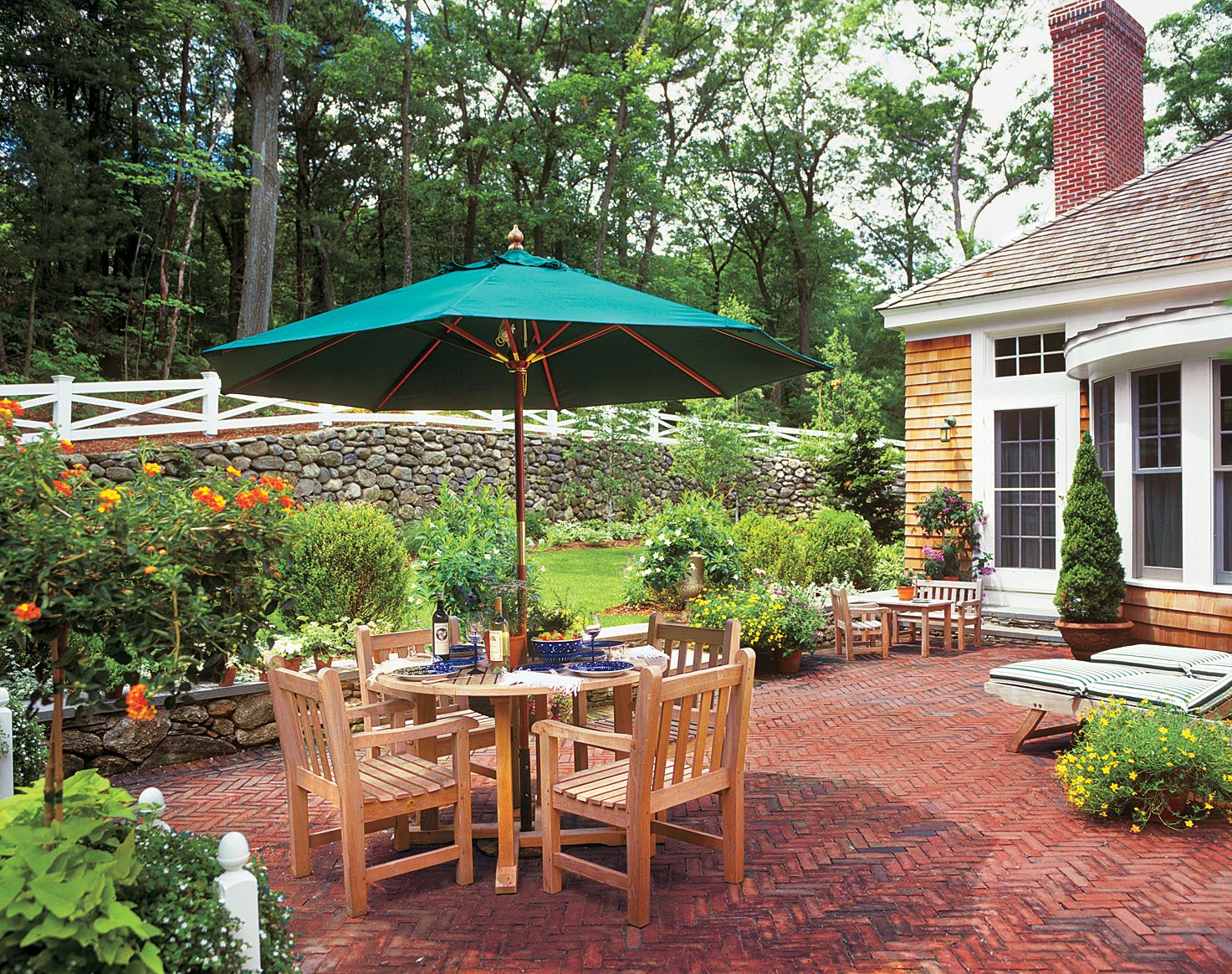
A herringbone pattern is a classic choice for brick patios, offering both visual interest and structural stability. This zigzag arrangement helps lock the bricks in place, creating a durable surface that can withstand heavy use and weather conditions. The herringbone pattern is particularly well-suited to formal landscapes and traditional home styles.
While you can use any rectangular brick or paver to make this pattern, long, narrow bricks laid on their edges create a particularly striking effect. This installation method also allows for more bricks per square foot, resulting in a more intricate and detailed surface.
How It’s Done

The key to a successful brick patio installation lies in the proper preparation of the base layers. Here’s a brief overview of the process:
- Excavate the area and install a sturdy base layer of compacted gravel.
- Add a layer of stone dust and level it carefully.
- Lay the bricks in the desired pattern, ensuring they’re level and properly spaced.
- Fill the joints between bricks with polymeric sand, which hardens when wet to lock the bricks in place.
Mortared Brick
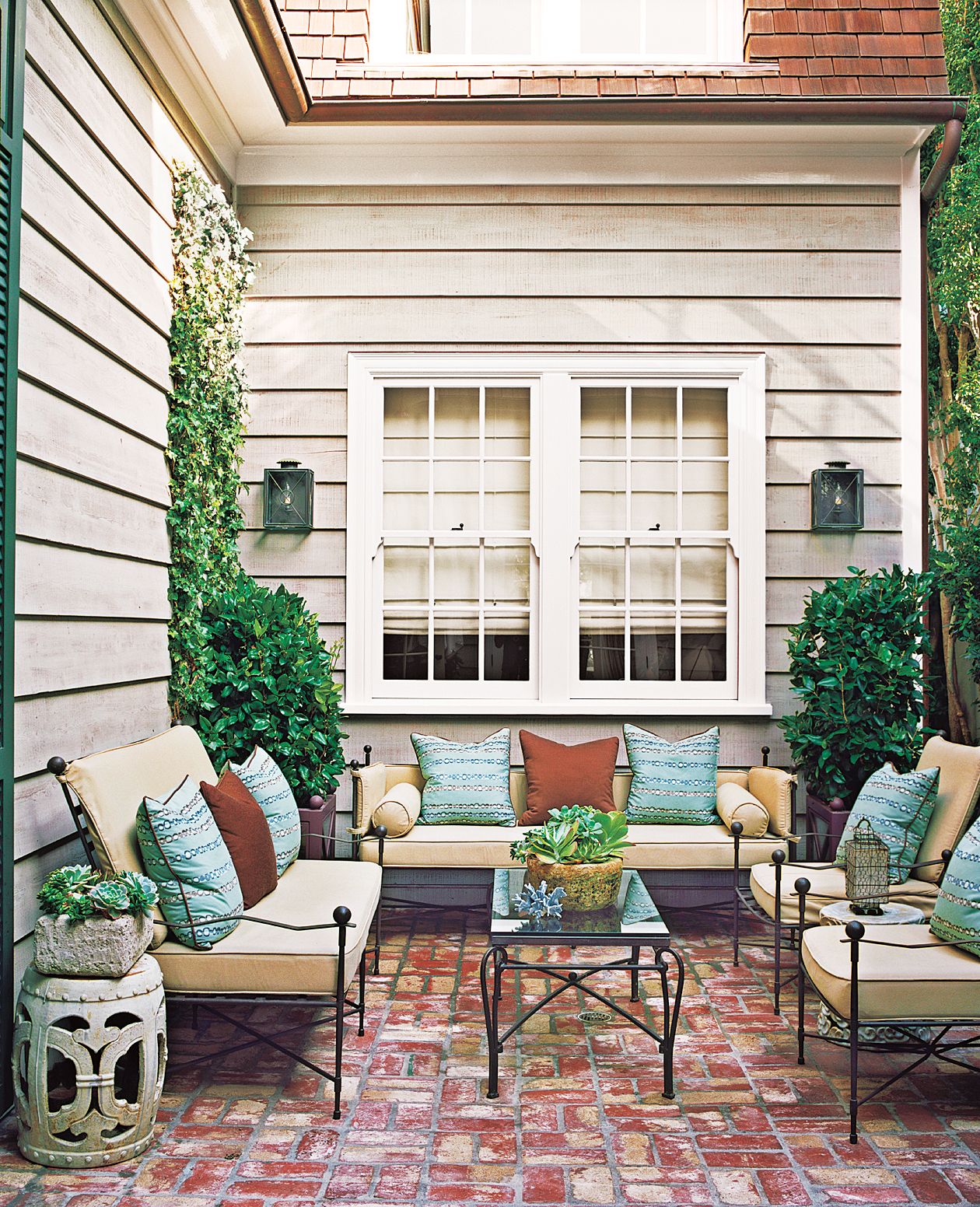
Mortared brick patios offer a smooth, seamless surface that’s easy to clean and maintain. This type of patio material is ideal for warmer climates where freeze-thaw cycles are not a concern, as these can damage mortar joints in colder regions.
A mortared brick patio needs a concrete base, making it a more expensive option for new installations. That said, it’s an excellent choice for covering an existing concrete slab. When you use this method to cover a concrete pad, opt for thin bricks to minimize the change in elevation at doors and steps.
Interlocking Pavers
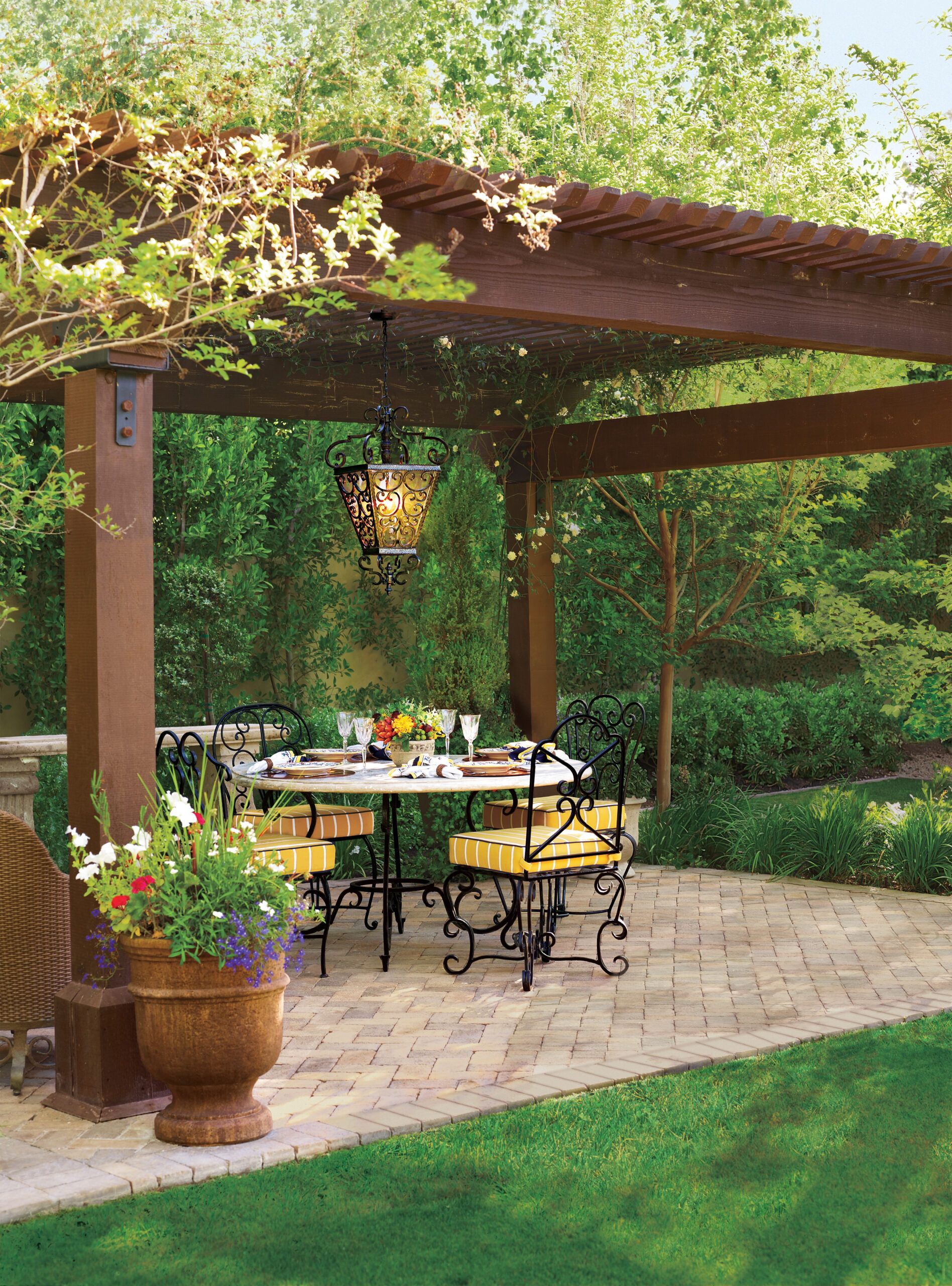
Concrete pavers offer a wide range of design possibilities, from sleek, modern tiles to rustic, cobblestone-like options. These versatile materials are installed on a permeable base of crushed stone and sand, with sand filling the joints between pavers. The tight spacing between pavers prevents furniture legs from getting stuck while still allowing for proper drainage.
Many concrete pavers feature built-in spacers along the edges, making it easy to achieve consistent joint widths during installation. While DIY installation is possible, you’ll likely need a plate compactor to get a stable, level surface.
Stone
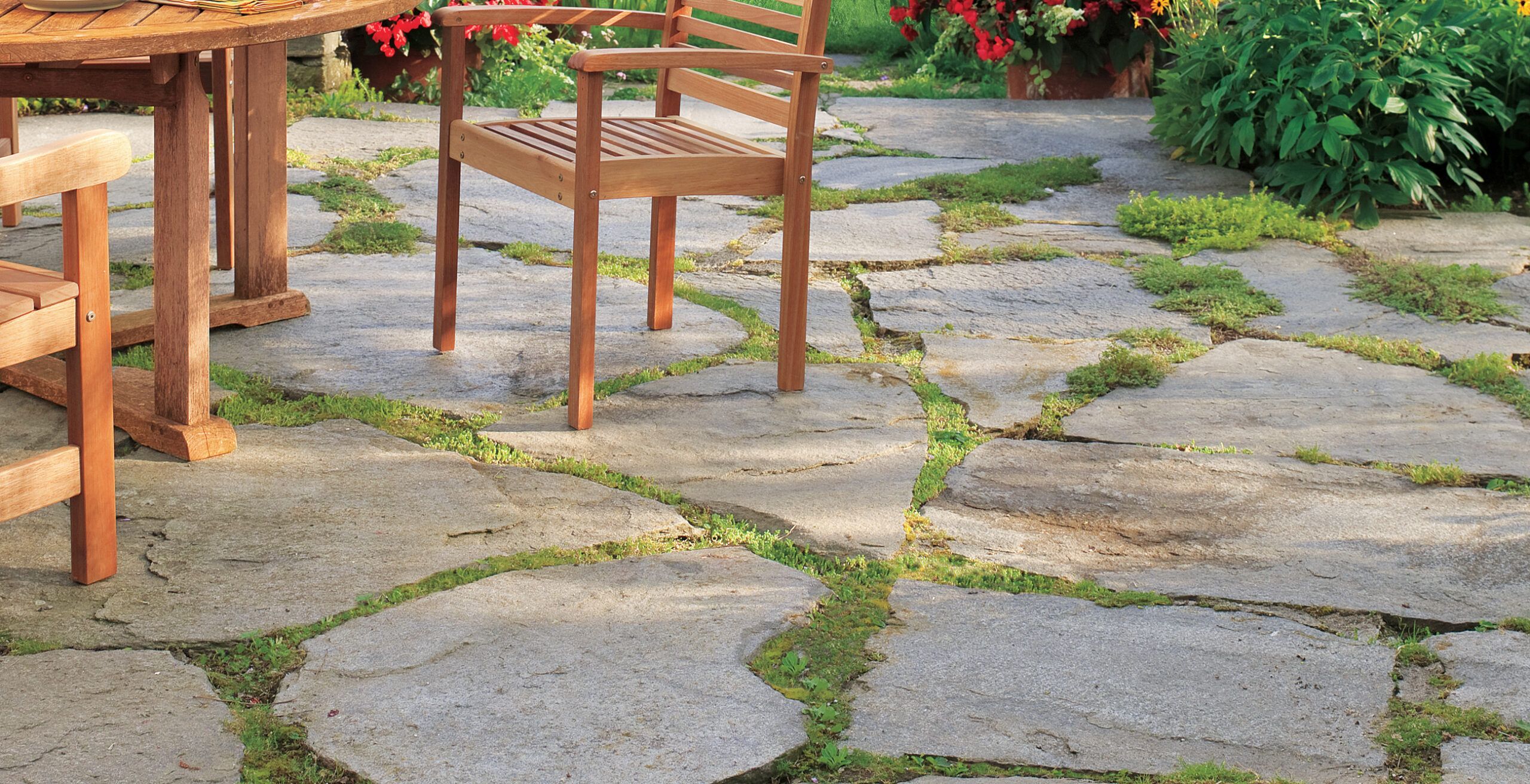
Natural stone patios offer timeless appeal and durability. The choice between cut stone with uniform edges and irregular, jagged-edged stones can dramatically affect the overall look of your patio. Dense stones like bluestone and granite are excellent choices for colder climates, as they resist flaking and moss growth. In warmer, drier regions, softer stones like limestone and sandstone can be suitable options.
Cut Bluestone
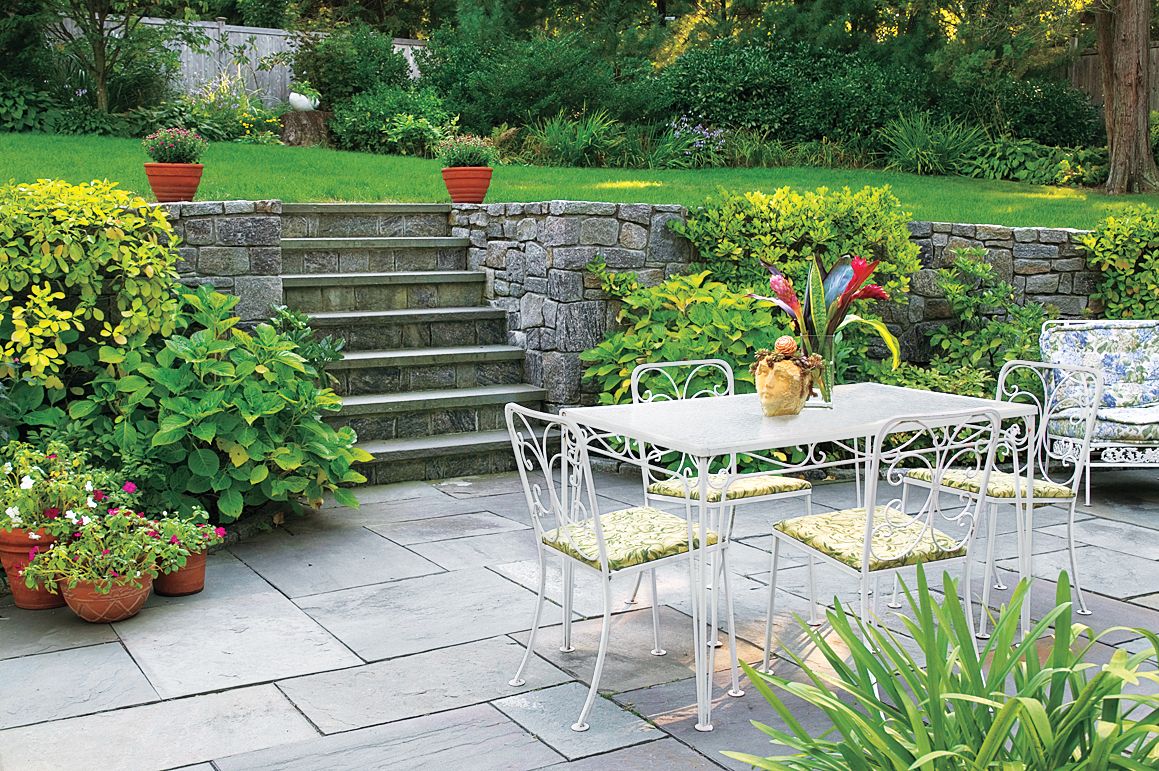
Cut bluestone creates a sophisticated, formal look for patios. Its smooth surface and tight-fitting joints result in a sleek, modern appearance that contrasts beautifully with more rustic elements like rough stone retaining walls.
Bluestone comes in various shades of blue, gray, and purple, allowing for interesting color combinations within your patio design. The tight fit of cut bluestone pavers makes the surface smooth enough for furniture and even portable grills.
Rustic Sandstone
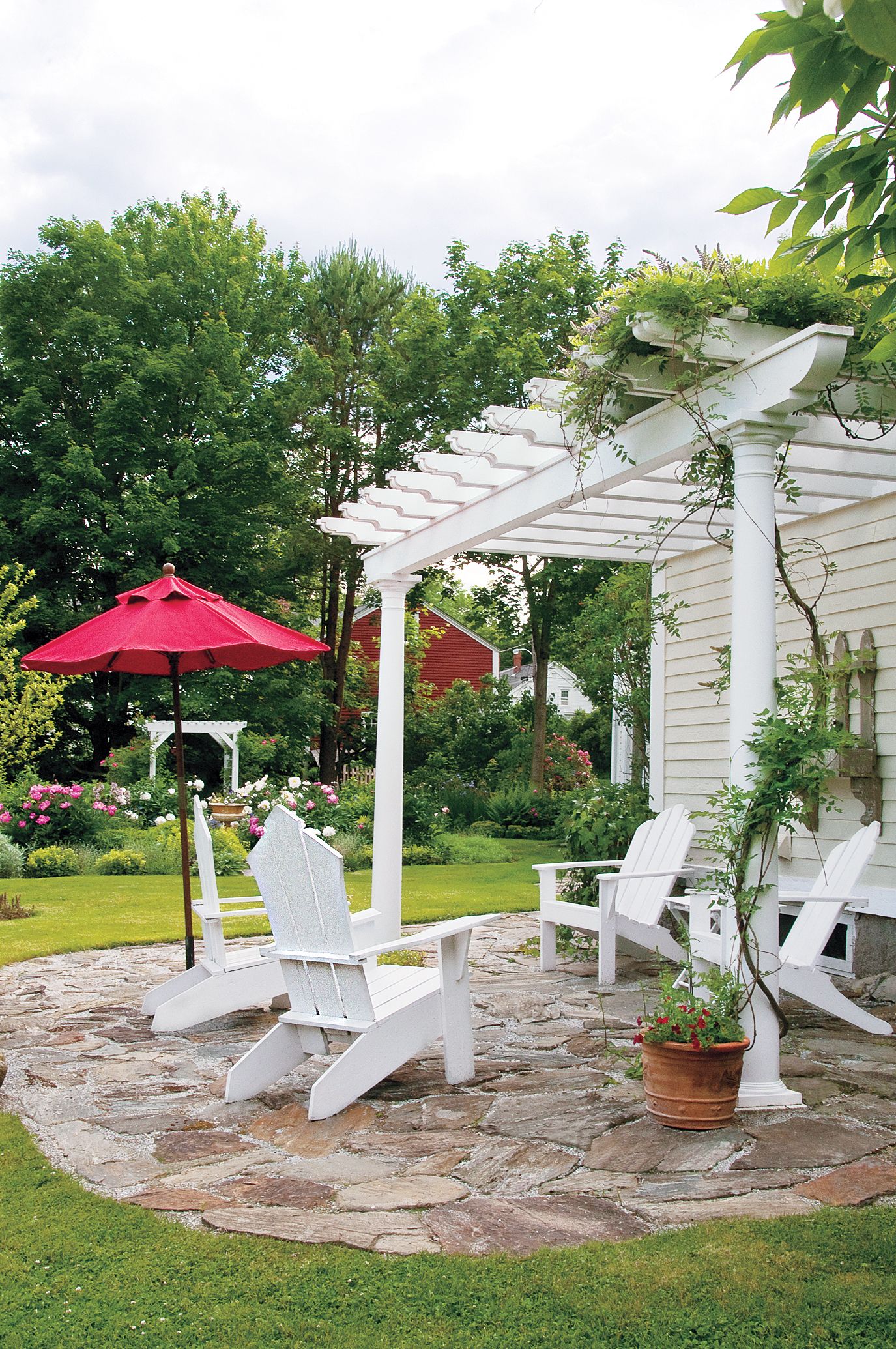
Rustic flagstone patios offer a natural, organic look that’s perfect for casual outdoor spaces. The irregular shapes and uneven surfaces of these stones create a charming, handcrafted appearance. When using rustic flagstone, choose your patio furniture carefully. We recommend pieces with broad legs, like Adirondack chairs, that can span the wide, gravel-filled joints between stones.
Installing a rustic flagstone patio requires skill and patience, as each stone must be individually leveled due to variations in thickness. This installation method creates a unique, one-of-a-kind patio surface that blends seamlessly with natural landscapes.
How It’s Done
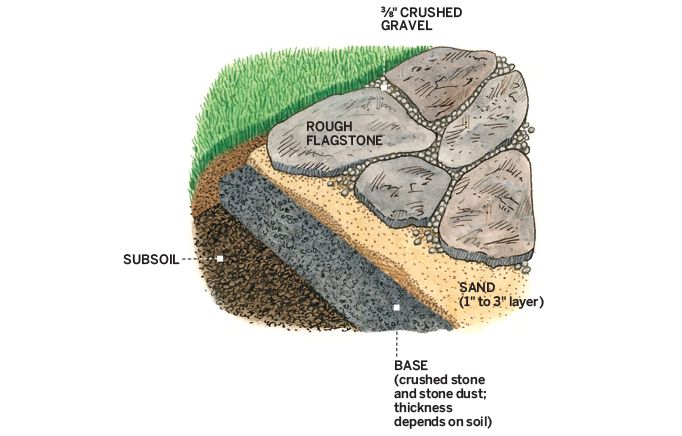
Installing irregular flagstones requires a different approach than working with uniform pavers. Here’s the step-by-step process:
- Prepare a base layer of compacted gravel.
- Add a layer of sand for leveling.
- Place each stone individually, using a pry bar to lift and adjust as needed.
- Add or remove sand beneath each stone to achieve proper leveling.
- Fill joints with gravel or plant with ground cover for a natural look.
This method allows for precise placement and leveling of each unique stone, giving you a flat and beautiful patio surface to complement your surrounding landscape.
Free-Form Flagstone
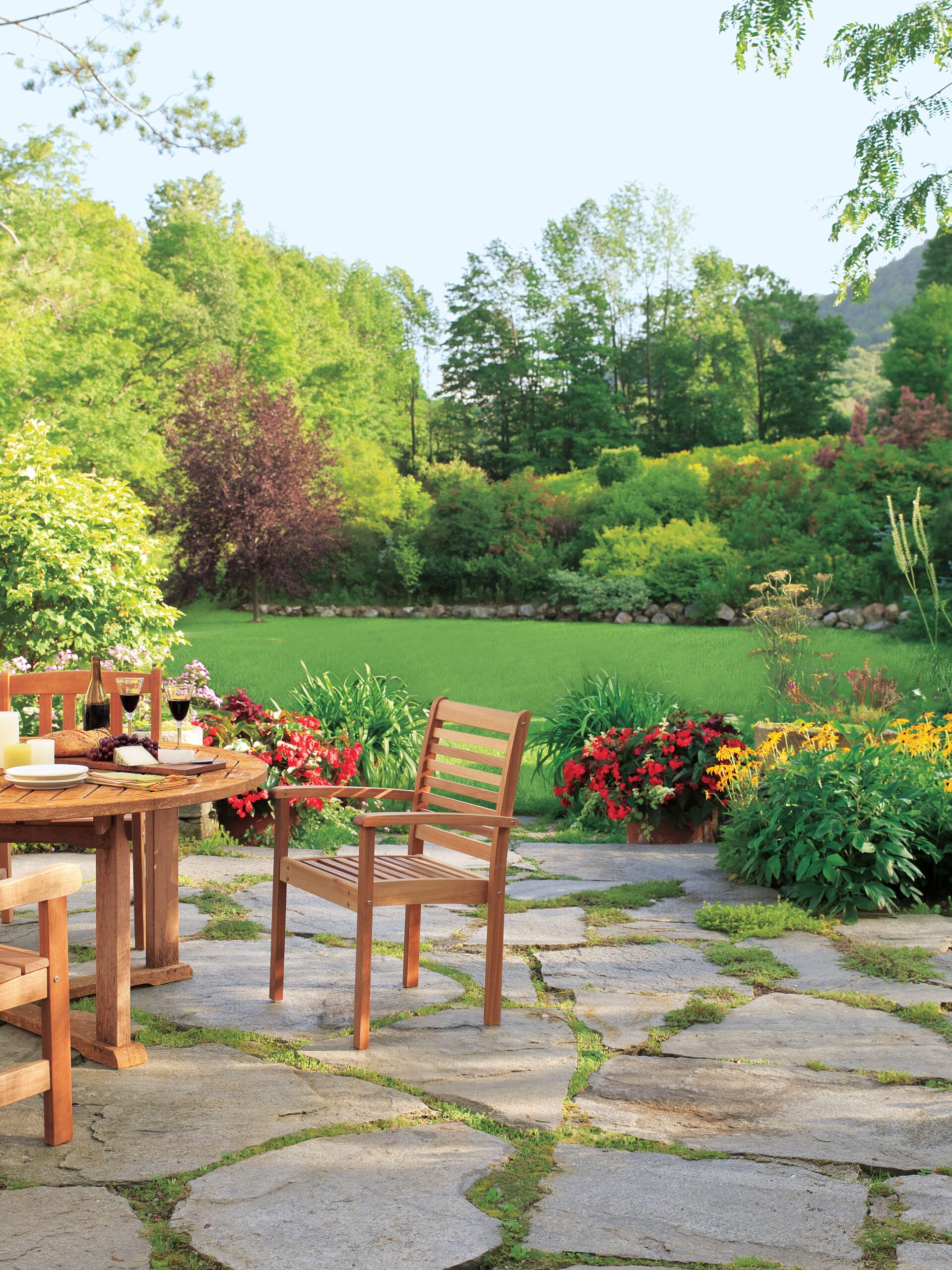
Free-form flagstone patios offer a natural, organic look that’s perfect for creating a seamless transition between your home and the surrounding landscape. The cleft finish of these stones, created by splitting the stone along its natural layers, provides a slip-resistant surface that’s both beautiful and practical.
One of the advantages of a free-form flagstone patio is its easy maintenance. The durable surface can withstand spills and mud, requiring only a quick rinse with a hose to clean. For added visual interest and functionality, consider planting the gaps between stones with low-growing, drought-resistant ground covers like creeping thyme.
Design Tips for a Perfect Patio
With your base material selected, you can turn your attention to design elements that will make it pop. Here are two of our favorite projects.
Put Plants Between Pavers
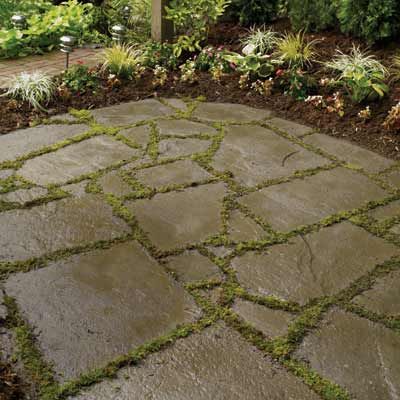
Incorporating plants between pavers or stones can soften the look of your patio and create a more natural, garden-like atmosphere. Plants are more visually appealing than mortar and can help reduce runoff by allowing water to percolate into the soil. When choosing plants for paver gaps, consider the following options that thrive in most regions and prefer full or partial sun:
- Thymus minus (Creeping thyme)
- Spanish sandwort
- Turkish speedwell
- Greek yarrow
- Miniature mat daisy (good for shady and moist areas)
- Thyme leaf speedwell
These low-growing plants can withstand foot traffic and require minimal maintenance, making them ideal for patio spaces.
Top Your Patio with a Pergola
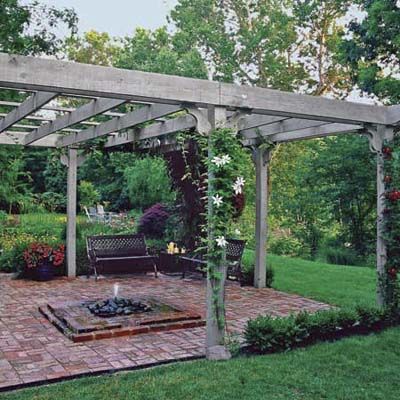
Adding a pergola to your patio can create a stunning focal point and provide partial shade for your outdoor living area. Freestanding pergolas offer flexibility in placement and don’t need to be attached to your home’s structure. When planning a pergola for your patio, consider the following factors:
- Footings: Posts are typically sunk 2 to 3 feet deep, depending on the pergola’s height, and set in tamped gravel. A skirted base provides a finished look.
- Materials: Options for posts, rafters, and purlins include treated lumber, easy-care vinyl-clad aluminum, and composite made from wood and plastic.
- Shade: Purlins provide some protection from the sun, but for more coverage, you can add a canopy of leafy vines or climbing roses, woven bamboo mats, sailcloths, or polycarbonate panels.
Our Conclusion
Creating the perfect patio involves careful consideration of materials, design, and functionality. Whether you choose natural stone, concrete, or gravel, your patio can become a beautiful part of your home. Adding elements like pergolas and plants between pavers can create a truly unique outdoor living space that reflects your personal style and enhances your enjoyment of the outdoors.

